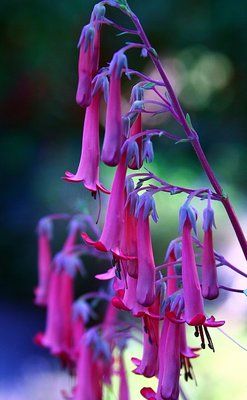
As gardeners, we all approach the new gardening season with enthusiasm and optimism. Then, the rain comes down hard and pelts your new plants into the ground, the nights turn cold again and some of the plants in your garden aren’t so happy anymore. That’s when you need some tried and true plants to star in your landscape, no matter what Mother Nature throws at you.
I’m often asked to give suggestions for resilient plants for a problem spot. These plants might have beautiful foliage, bark and texture, too, and serve two purposes in the garden. They might have flowers for some of the year to provide nectar for butterflies and hummingbirds or berries to feed wildlife. Most of all, they are easy to care for and trouble free.
Sturdy snowberry
Snowberry gets an A-plus for all of these qualities. A California native of shaded, mixed evergreen and oak woodlands, this 3- to 6-foot shrub thrives in a variety of places, including the dry shade under large trees like oaks. It tolerates poor soil and neglect and will grow well in full shade, but it blooms better and produces more berries if it gets some sun.
Clusters of pure white berries appear in late summer and early fall and last through much of the winter. The berries are not the first choice for most birds, but thrushes will eat them if there isn’t anything else available. Other wildlife will eat the berries, too.
In late spring or early summer, pretty blue-green leaves provide a nice contrast to tiny pink flowers, which hummingbirds love. Bees produce a white honey from their nectar-rich pollen.
Snowberry can be pruned as a nice hedge, providing twiggy, dense shelter for wildlife. Because of its vigorous root system, this plant is useful for stabilizing banks and slopes.
Maintenance is easy. Simply prune away some of the suckers every few years to keep it in check. If it gets too tall, shear it back in late winter to keep it compact.
Explorers Meriwether Lewis and William Clark collected this plant and took it back to President Thomas Jefferson. It was then sent to England in 1817 and became a popular garden novelty among plant collectors there.
Flowering phygelius
If, on the other hand, showy flowers are what you’re looking for in a specific spot, the perennial Phygelius would make a nice addition to your garden. This large 3- to 4-foot plant blooms from early spring into fall, and you can grow it in full sun or light shade.
Related to snapdragons and penstemon, phygelius’ flowers also suggest fuchsias, from which the plant gets its common name: cape fuchsia. Coral Princess is one of my favorite varieties, with lots of tubular, soft salmon and yellow flowers that attract hummingbirds.
In the same bed, you might plant a few Cambridge Blue geraniums to fill in and add a nice contrast at the base of the cape fuchsias. This bright, bluish-pink true geranium groundcover grows 8 inches tall and spreads slowly but widely. Easy to care for, true geraniums are hardy in the winter, need just average watering and can be sheared each fall for fresh spring blooms.
If you’d like to see many more tough and resilient plants for problem spots, visit the Hidden Gardens of Bonny Doon Tour on Saturday and Sunday, May 22 and 23.
Jan Nelson, a California certified nursery professional at Plant Works in Ben Lomond, will answer questions about gardening in the Santa Cruz Mountains. E-mail her at ja******@*ol.com.












